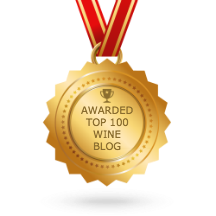Italy is the world's largest producer of wine by volume, representing 20% of the global production of wine. Approximately 40% of Italy's wine is exported to other countries, with Canada among the top 5 export destinations. With approximately 2000 indigenous varietals, Italy has the greatest number of varietals of any country. Approximately 300 to 400 of these varietals are actively used throughout Italy's 20 wine regions, with each region having it's own distinct varietals and styles.
Nebbiolo is almost exclusively grown in Italy, at the foothills of the Alps in Langhe, Piedmont, in northwestern Italy. It has been cultivated since the middle of the Roman Age and used to be known as 'Nubiola' (Latin for fog) because of the deep, intense fog that sets in the area of Langhe. The grape also develops a fog-like veil as it reaches maturity, and became known as a Nebbiolo in the 1200s. Nebbiolo is medium-sized and blue-black in colour. It is one of the earliest to bud, while also being the latest to harvest in late-October or early November. It needs ample sun exposure and a dry climate, while also preferring calcareous marl soils and higher altitudes in the range of 200 to 550 metres above sea level. Nebbiolo is the most terroir-expressive red grape in Italy and produces wines known for their high acidity and strong tannins, and can be aged for decades. The highly acclaimed wines of Barolo DOCG and Barbaresco DOCG are made with Nebbiolo.
Valpolicella translates to "The Valley of Many Cellars" and is not a grape. It is, in fact, a 25 km area in western Veneto, within the province of Verona, near Venice, at the foothills of the Alps and bordered by the Lessini Mountains to the north and east, and Lake Garda to the west. The cultivation of vines in this area can be traced back to prehistoric and Roman times. The soils are a mix of ancient volcanic tufa, calcareous, limestone and clay rich soils.
Valpolicella wines are blends with the indigenous Corvina the most important varietal. Corvinone and Rondinella grapes also play important roles, while other varietals such as Molinara, Oseleta, and Croatia can also be included as part of the blend. Corvina, meaning "Little Raven", has been in use since at least the 18th century and is mainly grown only in Veneto. Corvina is a thick-skinned grape that is good for drying, and produces light coloured wines with low tannins and high acidity. Corvinone means "big Corvina" and is a distinct grape that produces large clusters of grapes on the vine. Corvinone is a source of tannins, adding structure to the wines, making it a fine companion for blending with Corvina. Rondinella, meaning "Little Swallow", is a versatile grape that has a high sugar content and is good for drying, adding perfume and fruitiness to the wine.
Besides Valpolicella DOC and Valpolicella Superiore DOC wines, there are Valpolicella Ripasso DOC wines which are young Valpolicella wines that undergo a second fermentation - a "re-pass" or "go over again" - using the grape skins left from Amarone and Recioto wines. Amarone della Valpolicella DOCG wines use the Appassimento technique and significant ageing to create concentrated, structured wines that are age-worthy. The last style of Valpolicella wines are the Recioto della Valpolicella DOCG wines - a sweet, dessert wine made from dried grapes.
Both of the wines tasted as part of the masterclass are represented by Cavinona, an Ontario-based wine agency that specializes in Italian wine. They represent more than 70 Italian producers to offer a great selection of Italy's vast array of indigenous varietals. These producers are small, mostly family-run businesses that have been passed down over generations and have a commitment to craft quality and authentic wines that best express the native grapes and soils of their region.
These delicious wines are available for purchase by the case through Cavinona's online web store, as well as by the bottle at Terroni restaurants and wine shops. Additionally, the food items such as DOP Grana Padano (similar to Parmigiano-Reggiano) and DOP Piave cheeses are also available at Terroni restaurants.
With two more masterclasses on other Italian indigenous varietals to come, you can also attend by registering for the free class here. These classes are more enjoyable with the wines being tasted. As such, you will be able to purchase the wines for these classes from La Bottega di Terroni. To participate on social media, follow @trueitaliantaste and these hashtags on Instagram: #ExtraordinaryItalianTaste #TrueItalianTaste #iffoodcouldtalk.
Tasting Notes:
ODDERO LANGHE NEBBIOLO 2018 - DOC, Piedmont, Italy (XD) - $45.06100% Nebbiolo from La Morra. The medium-high intensity aromatics offer red berry, cherry, floral, spice, and earthy tones with a hint of balsamic and orange rind. The palate is light-bodied with flavours of dark red sour cherry, spice, floral, and earth. Acids are fresh and juicy, along with a touch of warmth on the mid-palate, but still well-balanced. Tannins are fine-grained and textured with a supple grip. Savoury, earthy notes flecked with cherry and floral linger on the long, juicy finish, with excellent length. Enjoy over the next 5-6 years. Score: 91 pts
PICCOLI 'ROCOLO' VALPOLICELLA SUPERIORE 2016 - DOC, Veneto, Italy (XD) - $42.80
Blend of 40% Corvina, 30% Rondinella, 25% Corvinone, and 5% Oseleta, Molinara, and Croatina. The lovely, elegant, fragrant and complex nose has perfumed aromas of floral, red berry, dried herb, sweet wood spice, meaty, and barnyard notes with touches of olive that continually evolve in the glass. It is light-to-medium bodied on the dry palate with more floral, sweet wood spice, berry, and vanilla flavours supported by fresh, lively acidity and smooth, refined, and well-knit tannins. Floral and savoury notes linger on the long, succulent finish. Score: 91+ pts











0 comments:
Post a Comment
Note: Only a member of this blog may post a comment.